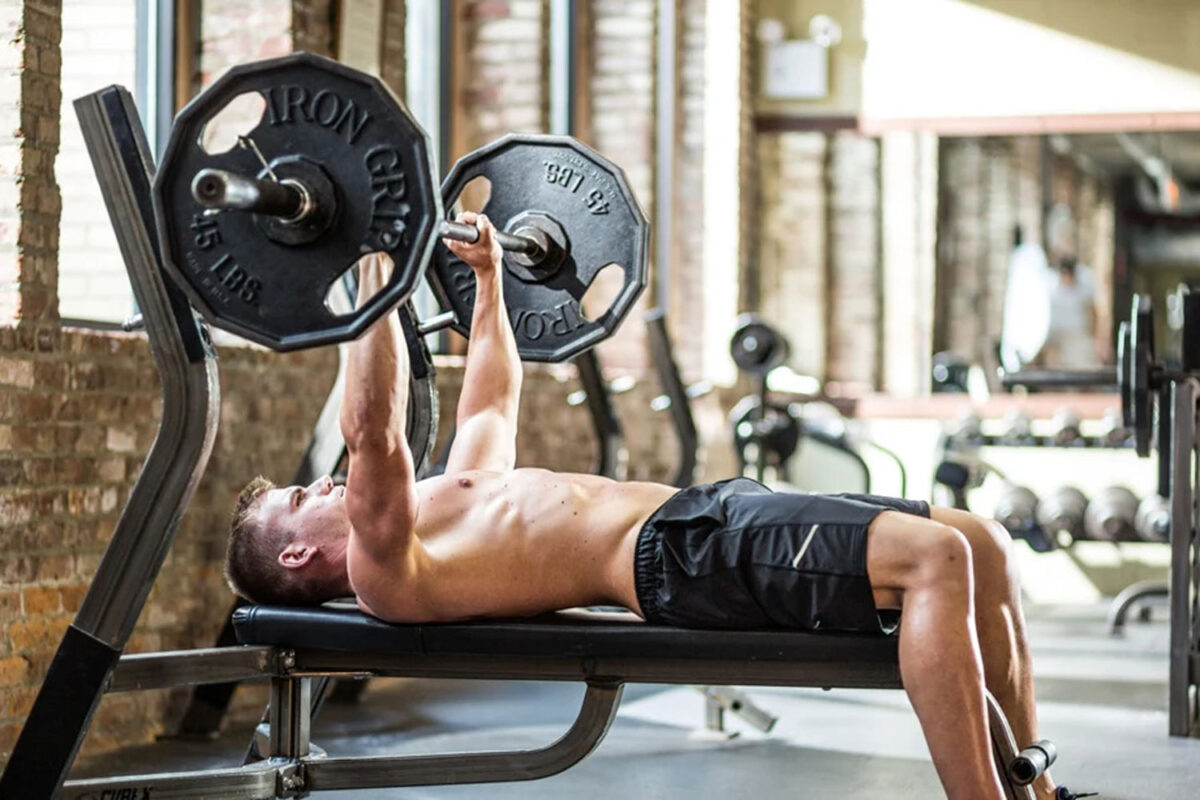The bench press is one of the quintessential chest exercises for anyone to perform. A movement that can be used to build muscle not only in the pectoral muscles in the chest but also muscles in your arms and shoulders, it’s no wonder the bench press is busted out on any international chest day.
While there are variations of the bench press, such as the incline bench press, decline bench press or even swapping the barbell for a pair of dumbbells, they will all go to waste if you don’t perform them with the correct form. While we’ve previously discussed the topic of bench press form, such as putting an arch in your back and ensuring your wrists are in the correct position, we haven’t touched on the subject of range of motion.
Fortunately, Dr Joel Seedman, a fitness trainer with a PhD in kinesiology and owner of Advanced Human Performance, has weighed in on the correct range of motion for the bench press.
Taking to Instagram, Dr Seedman says the optimal range of motion when performing the bench press is 90 degrees. But what exactly does that mean? Essentially, Dr Seedman says you shouldn’t be lowering the bar all the way down to your chest – the eccentric part of the movement – but instead, lower it down until your elbows are at a 90-degree angle.
He adds, “science confirms 90 degrees is optimal for strength, muscle hypertrophy and joint health,” and “unless you’re a competitive powerlifter, it’s best to NOT touch the bar to your chest on bench press variations.”
“If we examine research regarding structural physiology, biomechanics & neuromuscular physiology, all signs point to 90-deg as being optimal under high forces.”
“Besides saving the joints, 90-deg is superior not only in terms of therapeutic benefit but also for functional strength & size, as well as power & proprioception. This is true not only of bench presses but squats, hinges, pulls, deadlifts, lunges & presses. Additionally, 90-deg optimises mobility.”
“Limiting ROM (range of motion) to 90-deg actually promotes increased mobility & ROM for when you actually need it. In contrast, performing movements in excess of 90-deg is often the very thing that ends up limiting mobility & flexibility as exaggerated positions gradually produce chronic inflammation over time & inflammation is the very thing that limits mobility.”
In his video example with Kevin Minter, NFL athlete and special teams captain for the Tampa Bay Buccaneers, Dr Seedman places some resistance bands around the barbell to assist with finding the correct 90-degree angle. It’s a simple yet effective technique to help ensure you’re getting the maximum benefit from your bench press, which will see your chest grow in size.
How To Bench Press
So, taking on Dr Seedman’s advice, how do you bench press? Follow these simple steps and you’ll be on to a winner.
- Lie flat on a bench and position yourself so that your eyes are directly under the barbell
- Grip the bar with your hands slightly wider than shoulder-width apart. The barbell will likely have grooves to indicate where best to place your hands.
- Keeping your shoulder blades locked down and a slight arch in your back, remove the bar from the holder and slowly lower it down to your chest. Ensure the bar falls in line with your nipples. Following Dr Seedman’s advice, only lower until your elbows are at 90 degrees. Inhale as you lower the bar.
- Pushing your feet into the ground and your body into the bench, exhale as your push the bar back up until it’s back over your eyeline. You don’t need to lock your elbows out at the top.
- Repeat these steps for the desired number of repetitions. A recommendation would be 8-10 reps for 3-4 sets.
Read Next
